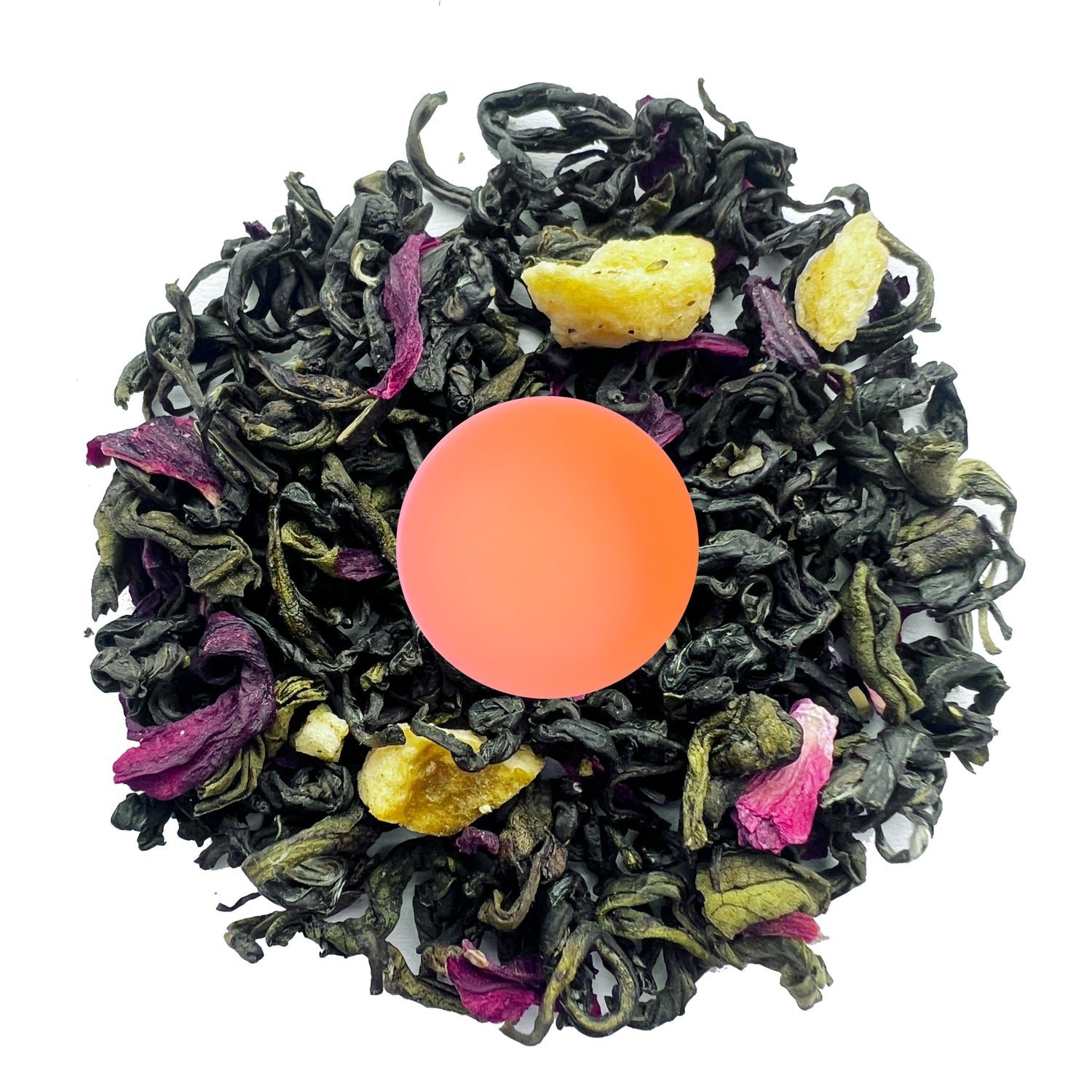108° Mt. Pumori Whole Leaf Black Tea – USDA Certified Organic
108° Mt. Pumori Whole Leaf Black Tea – USDA Certified Organic
Couldn't load pickup availability
Tea Name: 108° Mt. Pumori Whole Leaf Black Tea – USDA Certified Organic
Style: Whole Leaf, Long-Twisted
Type: Organic Black Tea
Standard: Gold
Sourcing Region: Ilam, Nepal
Elevation: ~6,500 ft
Harvest: Autumn Flush
Processing: Fully Oxidized (Whole-Leaf Preserved)
Certifications: USDA Organic
Suggested Infusions: 3-4
Texture: Thick, Brothy & Silky
Autumnal depth from the Himalayas — whole-leaf, bold, and richly aromatic
From the mist-veiled slopes of Ilam, Nepal, at nearly 6,500 feet, comes a whole-leaf black tea that captures the essence of Himalayan autumn. Each long, twisted leaf is carefully hand-plucked and fully oxidized to preserve its natural shape and vitality — resulting in a bold, ruby-red liquor that glows with inner warmth.
The cup opens with a gentle earthiness layered with cocoa husk, dried cherry, and warm oak, deepening into notes of sweet tobacco, molasses, and a touch of spice. Its texture is thick and brothy, coating the palate with a velvety warmth that feels both grounding and rejuvenating.
What makes this tea stand apart is its Himalayan altitude and microclimate — where the cooler, thinner air slows leaf growth, allowing a dense concentration of amino acids and sugars. This natural process enhances sweetness and body while minimizing bitterness, yielding a black tea with unusual depth, smoothness, and clarity.
While reminiscent of fine Darjeeling autumnals, this tea carries greater resonance and minerality, shaped by Ilam’s younger, chemical-free gardens and living Himalayan soil. It is a cup that feels alive — complex yet tranquil, rich yet clean, capturing the quiet dignity of high mountain harvests.
Aroma & Appearance
Long, twisted leaves in deep bronze and olive-black hues release an aroma of molasses, sun-dried wood, and faint cocoa. In the cup: a clear ruby-amber liquor with a warm, garnet glow and a naturally polished finish.
Taste Experience
-
Aroma: Molasses, cocoa husk, rosewood, and red fruit
-
Liquor: Deep ruby-amber, clear and radiant
-
Taste: Earthy malt, caramel, plum, and faint spice tones
-
Mouthfeel: Thick, brothy, and soothingly rounded
-
Finish: Long and mineral, with a soft, honeyed aftertaste
Why It’s Special
-
High-Elevation Origin (~6,500 ft):
Cooler air and diffused sunlight slow the growth of each leaf, concentrating natural sweetness and polyphenols for an antioxidant-rich cup with deep flavor and low bitterness. -
Whole-Leaf Craftsmanship:
Leaves are hand-rolled and left intact, preserving their full structure and flavor integrity — producing a cup that’s bold, full-bodied, and elegantly smooth. -
Autumn Flush Richness:
Harvested at the end of the growing season, when the cooler nights develop sugars and aroma compounds, giving the tea its signature molasses depth and mellow warmth. -
Pure Organic Cultivation:
USDA Certified Organic, grown without pesticides or synthetic fertilizers — letting the true Himalayan terroir express itself in clarity and purity. -
Beyond Darjeeling:
While Darjeeling teas are famed for their brightness, Ilam’s higher elevation, younger gardens, and organic soils yield a fuller-bodied, more mineral cup — a natural evolution of the Himalayan tea tradition. -
Sustainable Himalayan Tea Estates:
Sourced from smallholder growers and cooperatives dedicated to eco-friendly cultivation and fair trade, ensuring that each cup supports both the land and the people who nurture it.
Brewing Recommendations
-
Leaf: 2–2.5 g (≈1½ tsp) per 8–10 oz (240–300 ml)
-
Water: 205 °F / 96 °C
-
Time: 3–4 minutes
-
Re-steeps: 2–3; add 30–45 sec each infusion
-
Milk pairing: a splash of warm milk accentuates malt & butterscotch—no sweetener needed.
- Pro Tip: Try the first infusion plain to appreciate the natural caramel and malt notes, and add a splash of milk in the second infusion for a velvety, breakfast-style finish.
The taste profiles of loose-leaf teas can vary widely depending on the steep duration, tea-to-water ratio, and water temperature. We encourage you to try different combinations for brewing tea to find the perfect tea, that speaks to your taste buds.
Save 10% with a Tea Subscription
With our tea subscription, you can enjoy a hassle-free monthly delivery of your favorite teas and save money! Cancel anytime!












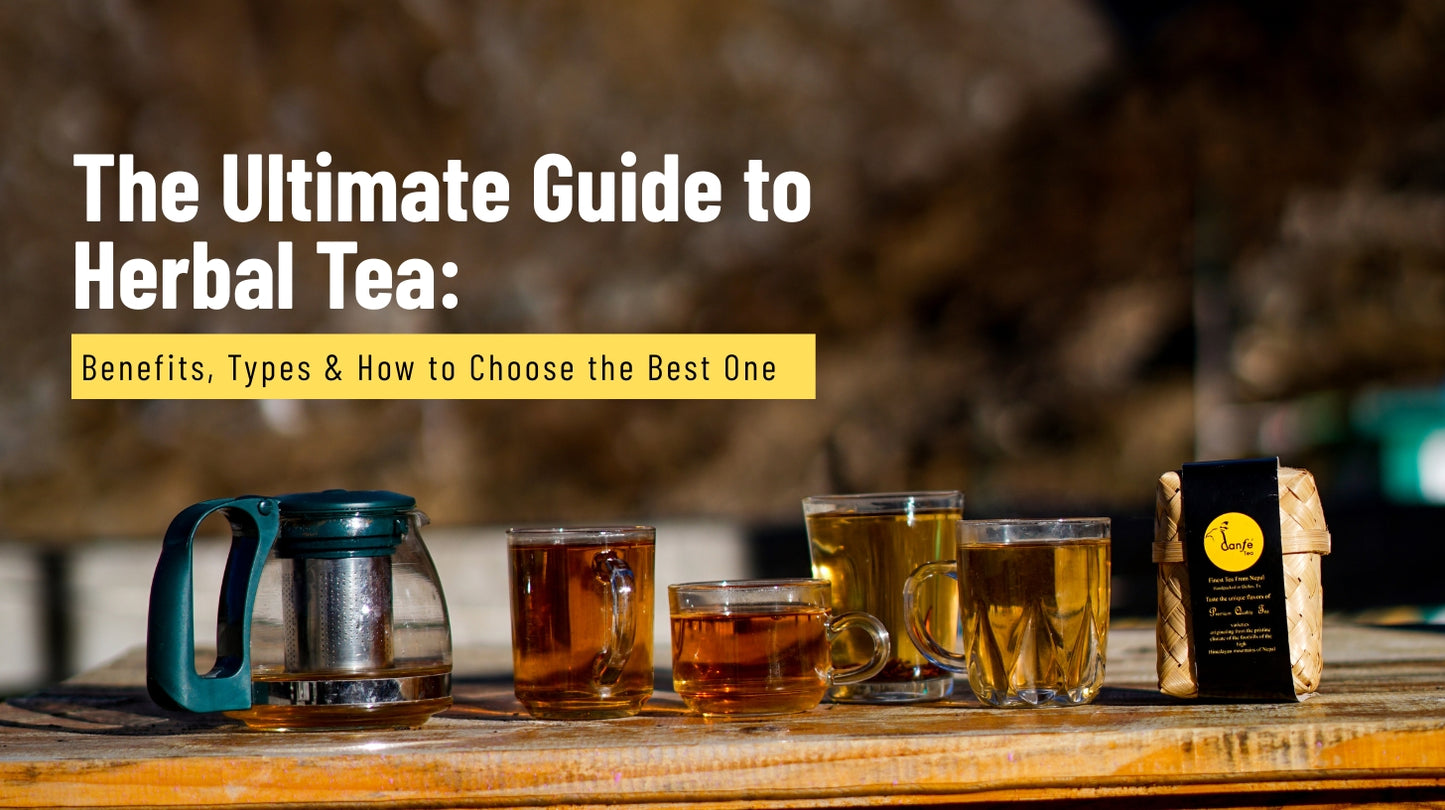

The Tea Mystic Says
High above the valleys of Ilam, where mist drifts through the ridges and sunlight filters gently over emerald slopes, grows a tea defined by its patience. The long, unbroken leaves are carefully hand-rolled, their graceful twists preserving the essence of the mountain itself.
When steeped, they unfurl like dark silk in water, releasing a ruby-red liquor that shimmers with warmth. The first sip is deep and grounding — malt and molasses layered with hints of dried plum, cocoa, and soft wood spice. As the cup cools, subtler notes emerge — sweet tobacco, warm stone, and the clean breath of rain on earth.
The experience is both powerful and calm, a tea that carries the stillness of the high Himalayas in every slow-unfurling leaf. It is a whole-leaf symphony of depth, purity, and quiet elegance — Ilam’s autumn, steeped to perfection.
Methods to Brew Tea
We believe that your tea experience should be completely personal. Individual taste buds are unique and there is no right or wrong way to brew tea. Therefore we encourage tea lovers to not necessarily bind to traditional methods but let their experience, and discovery guide them. After all, that is where the joy of drinking tea lies. You should try different amounts of tea, steeping time, and water temperature to find the perfect taste you’ll fall in love with.
-
Mild-Smooth
- Get 10 oz filtered water and bring it to a boil.
- Add about 1 teaspoon of tea buds into a clear glass or in your Steeping cup.
- Pour the boiling hot water into your clear glass or steeping cup containing tea buds.
- Let it steep for 4 minutes.
- The color is light golden. Strain and enjoy every sip of it.
- Repeat for the second infusion.
-
Robust-Energizing
- Get 10 oz filtered water and bring it to a boil.
- Add about 1.5 teaspoons of tea buds into a clear glass or in your Steeping cup.
- Pour the boiling hot water into your clear glass or steeping cup containing tea buds.
- Let it steep for 6 minutes.
- The color is Dark golden. Strain and enjoy every sip of it.
- Repeat for the second infusion.
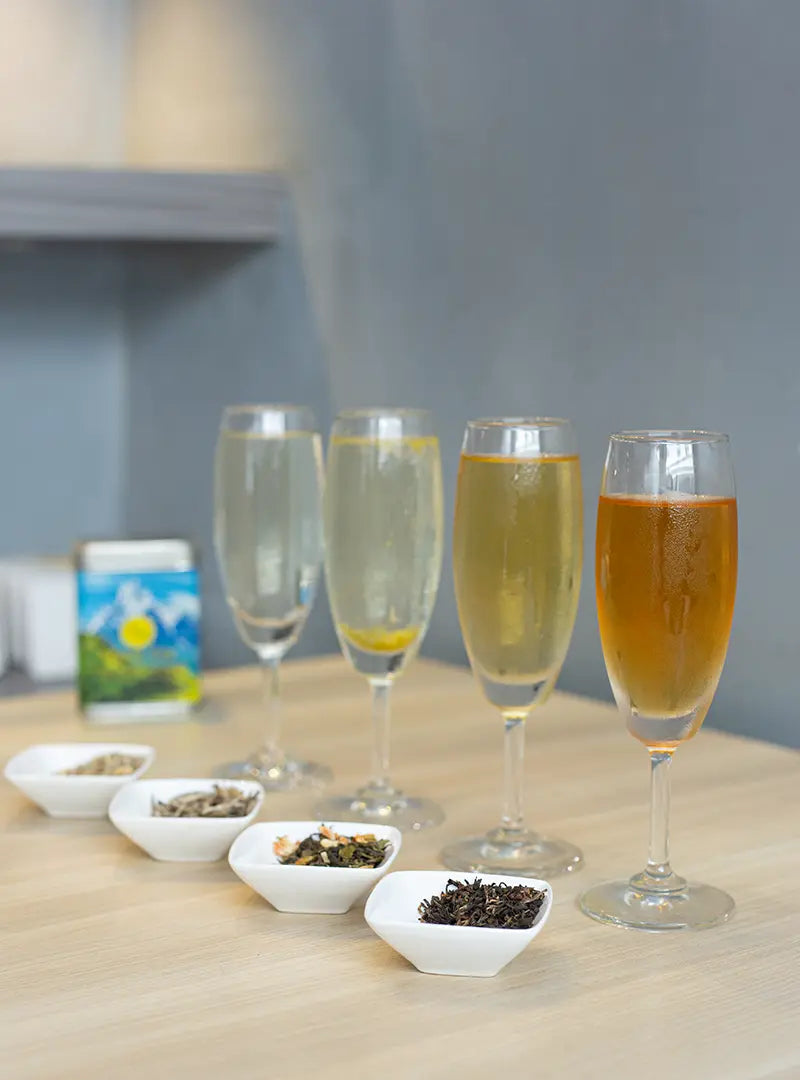
Iced teas
Can you make sweet/ unsweet iced teas from loose-leaf teas?
Of course, you can! High-quality loose-leaf teas make the most refreshing iced teas—smooth, crisp, and oh-so-quenching!
While some might call it blasphemous to add sweetener/sugar to high-quality loose-leaf teas, here in Texas, where sweet iced tea is a beloved tradition, we have been using our loose-leaf to uplift the iced tea experience.
We have tried and perfected the art of turning your favorite loose-leaf tea into a delicious iced delight.
It's time to try it for yourself. Here's how we do it:
Pro tip: Feel free to experiment with water amounts, temperature, steeping time, tea quantity, and sweetener quantity to find your perfect balance.
Steep suggestions for iced teas:
Amount of Water: 2 Liters
Amount of Loose Tea: 10-12 grams (5-6 teaspoons)
Steeping Time: 15-20 minutes
Steeping Temperature: 190-2000°F
| Steps to Brew Iced Tea: |
|---|
| Step 1: Start with a 2-liter batch. Boil water, then remove it from heat. Let it cool for 1-2 minutes until it's around 190-200°F. |
| Step 2: Add loose-leaf tea. Add 10 to 12 grams of your favorite loose-leaf tea OR 5 to 6 teaspoons. |
| Step 3: Steep the tea. Steep for 15-20 minutes (or longer if you prefer a stronger brew). |
| Step 4: Strain and cool. Strain the tea, then let it cool down. Add ice. (Pro tip: For best flavor, let it chill in the fridge for a few hours or overnight. Add ice when you drink.) |
| Step 5: Sweeten to taste. Add your favorite sweetener, but remember that balance is key—don’t let the sweetener overpower the tea’s flavor. (Pro tip: As you sip, let the tea linger in your mouth for a couple of seconds to fully enjoy its rich flavors.) |
FAQs
Frequently Asked Questions
What makes Mt. Pumori Whole Leaf Black Tea distinct?
This tea is crafted from entire, unbroken leaves — hand-rolled to preserve the full structure, essential oils, and volatile compounds that give high-mountain teas their natural depth.
Grown at 6,300–6,600 ft (1,920–2,010 m) in Ilam, Nepal, each leaf develops slowly in the thin air and cool temperatures. This slower photosynthesis increases L-theanine (≈2.4%) and natural sugars, while reducing catechins (bitterness compounds) by nearly 10–12% compared to mid-altitude black teas.
The result is a silky, brothy liquor that balances richness, sweetness, and aromatic complexity — a defining feature of truly high-elevation Himalayan teas.
How does it compare to Darjeeling teas?
Darjeeling gardens typically grow between 3,000–5,800 ft, while Mt. Pumori’s tea gardens rise 500–1,000 ft higher into the cloudline.
That extra altitude produces cooler, slower-growing conditions, giving the tea:
15–18% more amino acids, especially L-theanine and glutamic acid (for umami and sweetness)
20% higher volatile aromatic compounds, such as benzaldehyde, linalool, and geraniol, responsible for floral, woody, and fruity aromas
Lower catechin oxidation, reducing astringency and yielding a naturally smooth, honeyed finish
While Darjeeling teas are admired for their muscatel brightness, Mt. Pumori’s altitude and whole-leaf craftsmanship create a fuller, thicker, and more mineral-bodied liquor — the Himalayan equivalent of depth meeting finesse.
What gives the liquor its deep ruby color and creamy texture?
The striking ruby-amber liquor and thick mouthfeel come from its autumn flush oxidation profile — a balanced ratio of:
Theaflavins: ~90 mg/cup (structure, color, floral lift)
Thearubigins: ~230 mg/cup (body, warmth, caramel tone)
Amino acids: ~25 mg/cup (sweetness and smoothness)
This natural balance, achieved through slow oxidation at cooler mountain temperatures, gives the tea its dense, velvety liquor and gentle cocoa-malt depth without bitterness.
What flavor profile can I expect?
Aroma and taste unfold in gentle progression:
Primary: malt, molasses, cocoa husk
Secondary: dried plum, toasted almond, soft wood spice
Finish: mineral-sweet and clean, with faint honey and red fruit resonance
Each infusion reveals new dimensions — the first bold and earthy, the second mellow and nutty, the third floral and mineral-bright.
Why is whole-leaf tea superior to broken or CTC teas?
Keeping the leaf whole maintains the internal structure of polyphenols and amino acids, which release gradually during brewing.
Whole-leaf teas yield up to 25% higher retention of essential oils and 30% lower tannin leaching, resulting in smoother infusions.
CTC or broken-leaf teas oxidize too rapidly, producing harsher cups with less aroma complexity.
This is why Mt. Pumori Whole Leaf Black Tea offers a multi-layered experience rather than a single, overpowering note.
How antioxidant-rich is this tea?
Each cup contains approximately 410–430 mg of total polyphenols, composed of:
Theaflavins + Thearubigins: ~300 mg
Flavonols (quercetin, myricetin): ~80 mg
Catechins (EGCG, ECG): ~30–40 mg
This makes it 10–15% higher in antioxidant density than average Darjeeling teas — largely because the high-elevation, organic soil of Ilam is richer in manganese, potassium, and magnesium, elements that naturally stabilize polyphenols.
How much caffeine and L-theanine does it contain?
Per 8 oz cup:
Caffeine: ~50–55 mg
L-theanine: ~18–22 mg
This balanced ratio produces a calm, alert energy — energizing without overstimulation, a signature of shade-grown, high-altitude black teas.
How does the Himalayan altitude affect flavor chemistry?
At ~6,500 ft, air pressure drops by ~20% and the growing season shortens by 25–30 days. The leaves respond by producing more sugars and protective aromatic compounds, including:
Linalool (floral) and benzaldehyde (fruity-sweet) — +15–20% higher than in mid-altitude teas
Theanine (umami-sweetness) — +10–12%
Lower catechins (bitterness) — −8–10%
This balance creates a naturally sweeter, fuller, and more complex liquor, with layered depth and zero sharp edges.
What makes the autumn flush special?
After the monsoon rains, the soil in Ilam is saturated with minerals while temperatures drop sharply. The plants focus on recovery, channeling stored nutrients into fewer, thicker leaves.
This creates a tea that’s sweeter, maltier, and smoother, with a deeper red color than first- or second-flush teas.
It’s a harvest prized by connoisseurs who value warmth, roundness, and structure over sharp floral notes.
How should I brew it to experience its full depth?
Tea: 2.5 g (≈1½ tsp) per 8 oz water
Water Temp: 205 °F (96 °C)
Steep Time: 3½ – 4 minutes
Reinfusions: Up to 3 times; add 30 sec for each infusion
Best Water: Low-mineral spring or filtered water (TDS <100 ppm)
Tip: The second steep often reveals honey and red fruit undertones — a softer, more meditative cup.
How long does it stay fresh?
Kept airtight, away from heat and moisture, Mt. Pumori Whole Leaf Black Tea remains vibrant for up to 24 months post-harvest.
Its low moisture content (~2.8%) and antioxidant density act as natural stabilizers, keeping the aroma intact far longer than broken-leaf teas.
Discover More Types of Teas
-
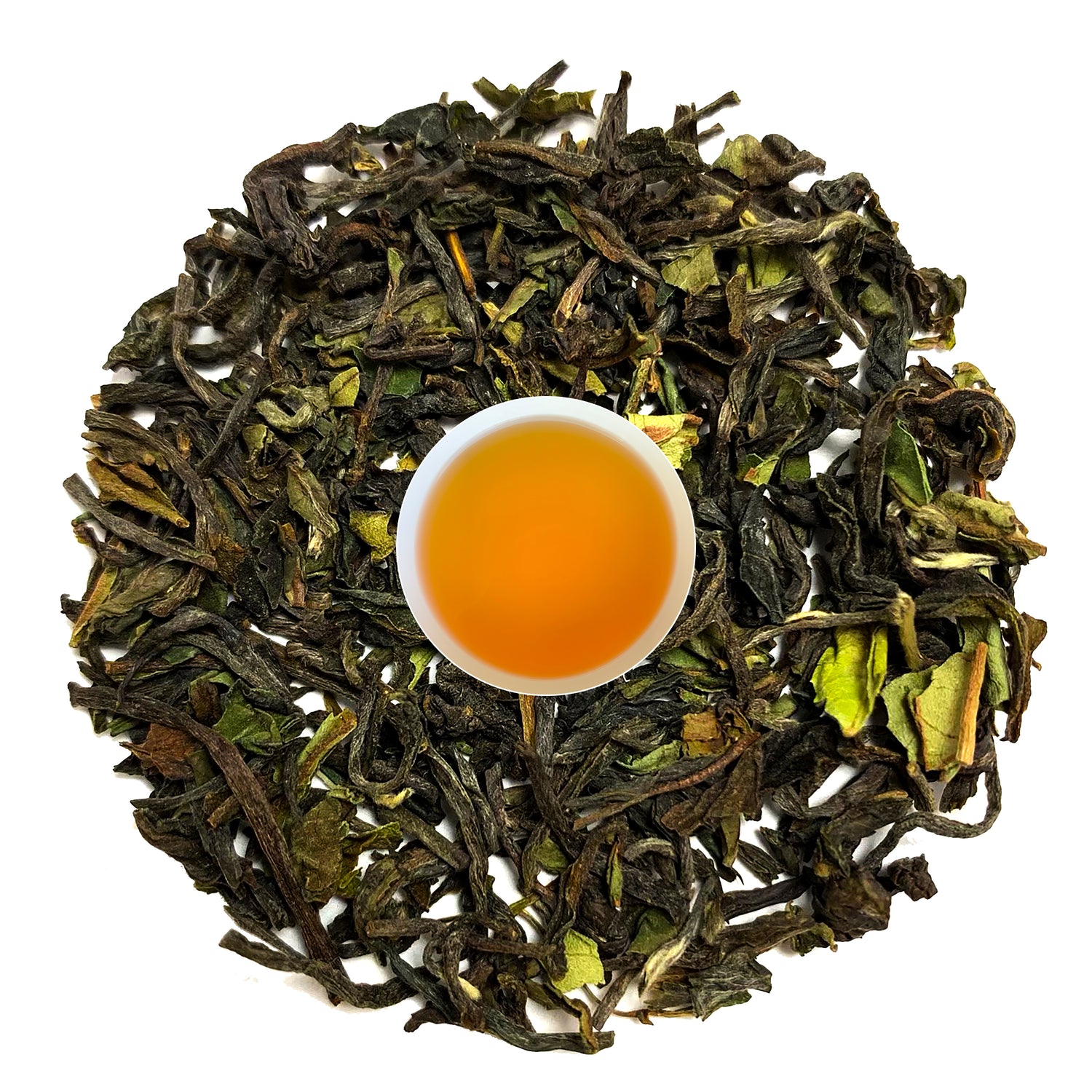
Best Black Teas from the Himalayas
Discover the list of best black teas from the Himalayas.
-

Asian Herbal Tea and Blends
Asian herbal teas and blends are one of the most sought-after teas...
-
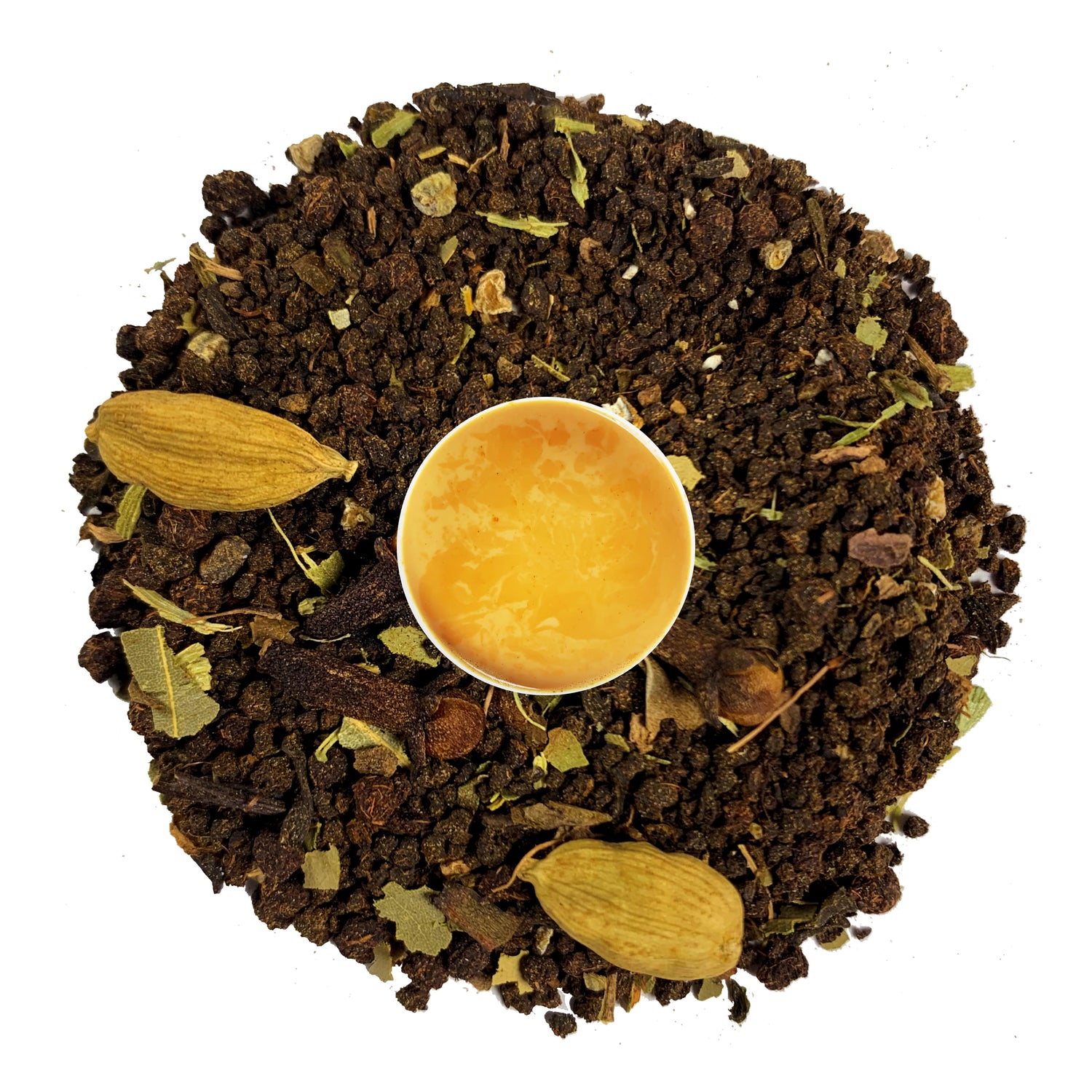
Detox Teas - Nepal Tea Blends & Tisanes
Feel the warmth and charm of the Himalayas with our handpicked collection...



















